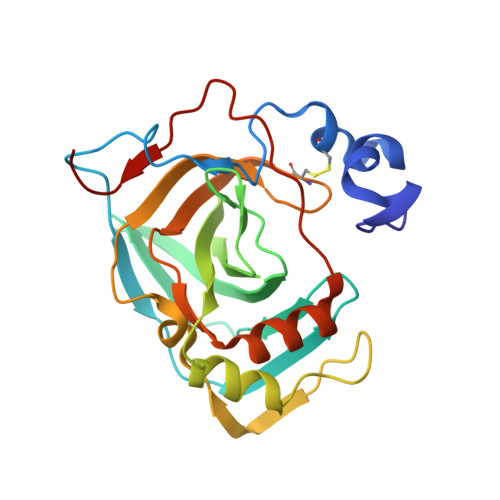Structural and biophysical characterization of the alpha-carbonic anhydrase from the gammaproteobacterium Thiomicrospira crunogena XCL-2: insights into engineering thermostable enzymes for CO2 sequestration.
Diaz-Torres, N.A., Mahon, B.P., Boone, C.D., Pinard, M.A., Tu, C., Ng, R., Agbandje-McKenna, M., Silverman, D., Scott, K., McKenna, R.(2015) Acta Crystallogr D Biol Crystallogr 71: 1745-1756
- PubMed: 26249355
- DOI: https://doi.org/10.1107/S1399004715012183
- Primary Citation of Related Structures:
4XZ5 - PubMed Abstract:
Biocatalytic CO2 sequestration to reduce greenhouse-gas emissions from industrial processes is an active area of research. Carbonic anhydrases (CAs) are attractive enzymes for this process. However, the most active CAs display limited thermal and pH stability, making them less than ideal. As a result, there is an ongoing effort to engineer and/or find a thermostable CA to fulfill these needs. Here, the kinetic and thermal characterization is presented of an α-CA recently discovered in the mesophilic hydrothermal vent-isolate extremophile Thiomicrospira crunogena XCL-2 (TcruCA), which has a significantly higher thermostability compared with human CA II (melting temperature of 71.9°C versus 59.5°C, respectively) but with a tenfold decrease in the catalytic efficiency. The X-ray crystallographic structure of the dimeric TcruCA shows that it has a highly conserved yet compact structure compared with other α-CAs. In addition, TcruCA contains an intramolecular disulfide bond that stabilizes the enzyme. These features are thought to contribute significantly to the thermostability and pH stability of the enzyme and may be exploited to engineer α-CAs for applications in industrial CO2 sequestration.
Organizational Affiliation:
Department of Biochemistry and Molecular Biology, University of Florida College of Medicine, Gainesville, FL 32610, USA.
















